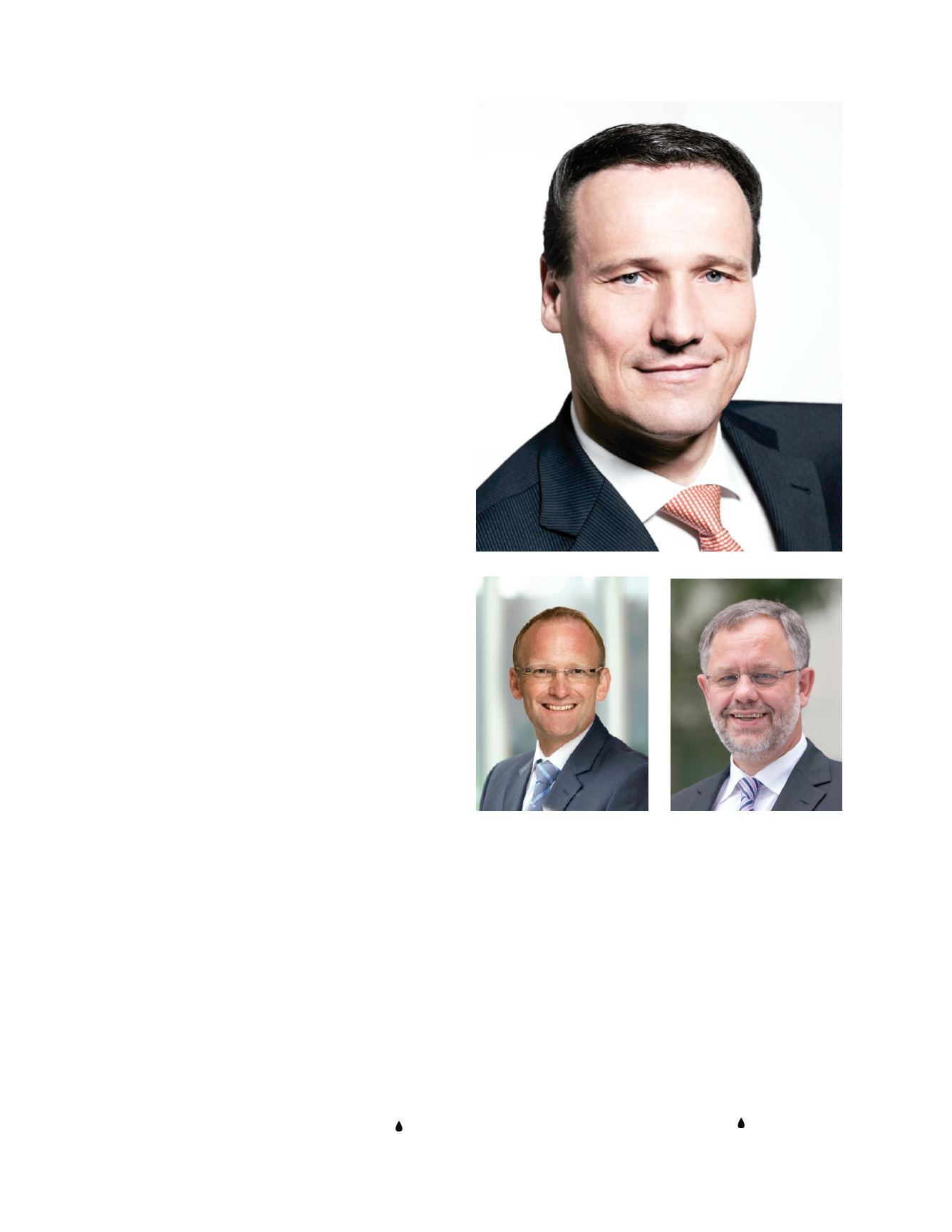
12
Fuels & Lubes International Quarter Three 2015
competition,” he
said. “The driver for
our business is fuel
economy.”
During the two-year
construction, Düssel said
the company maintained
full, uninterrupted supply
to their customers and
recorded more than
275,000 safe work hours.
During a press
conference with top
company executives, the
company revealed plans
to either further expand
the Singapore plant
(there’s still room in the
two-hectare site) or build
another plant elsewhere
in Asia.
“Our [original] decision
to go for Singapore is a
multitude of criteria. IP
[intellectual property]
protection is one
element, but is not the
decisive element,” said
Peter Meinshausen,
regional president
for South East Asia,
Australia & New Zealand,
of Evonik Industries.
“Proximity to market
is also a key issue,”
Meinshausen said.
“Evonik can ensure that
our customers’ needs
are catered to in Asia for
Asia.”
The Singapore plant
is the largest of five
plants, signifying the
importance of the region
for Germany’s Evonik
Industries’ oil additives
business line.
China is now the
largest lubricants market
in the world; therefore,
it seemed to be a logical
contender back in 2008.
“While China is an
important market, it is
not the only market,”
said Meinshausen. “It
is important to find a
location which is central.
Yes, cost in Singapore is
not on the cheap side, but
accessibility of market is
important,” he said.
Meinshausen added
that the strong support
provided by the
Singapore Economic
Development Board
for the recent plant
expansion, as well as the
original investment, was
important. Singapore’s
economic climate makes
investing easy in the
island-nation, he said.
“This is another
reason why Singapore is
so important for us.”
According to the EDB
Chairman, Beh Swan Gin,
companies across the
entire lubricants value
chain have invested more
than SGD 400 million
(USD 301 million) in
Singapore over the past
two years.
“Singapore, as
a leading regional
distribution hub and one
of the top bunkering
hubs in the world, is
well-positioned to take
advantage of the strong
demand for lubricants in
Asia,” he said.
“The global market for
lubricants is expected
to grow strongly in the
upcoming years,” he said.
“With an estimated CAGR
[compounded annual
growth rate] of 2.5%, the
lubricants market size is
expected to reach USD
70.32 billion by 2020.
Asia Pacific will be the
fastest-growing market,
representing 40% of
global demand.”
是合理的。“虽然中国是一个重
要的市场,但不是唯一的市场,”
Meinshausen说。“因此要找到
一个中心位置很重要。确实,新
加坡的成本不低,但进入市场非
常重要,”他说。
Meinshausen补充说,新加
坡经济发展局对近期工厂扩产,
以及当初最早投资的大力支持
非常重要。新加坡的经济气候
使得在这个岛国的投资非常方
便,他说。
“这是新加坡对我们来说如此
重要的另一个原因。”
据EDB主席Beh Swan Gin的
说法,整个润滑油价值链上的公
司在过去的两年中在新加坡的
投资总额超过了4亿新元(3.01
亿美元)。
“新加坡是领先的地区性分销
中心,也是世界上最大的加油枢
纽之一,已准备好充分利用亚洲
对润滑油的强劲需求,”他说。
“全球润滑油市场预计将在未
来强劲增长,”他说。“估计年复
合平均增长率为2.5%,预计到
2020年,润滑油市场的规模将
超过703.2亿美元。亚太地区将
成为增长最快的市场,占全球需
求的40%。”
Patrik Wohlhauser
Ralf Düssel
Peter Meinshausen


